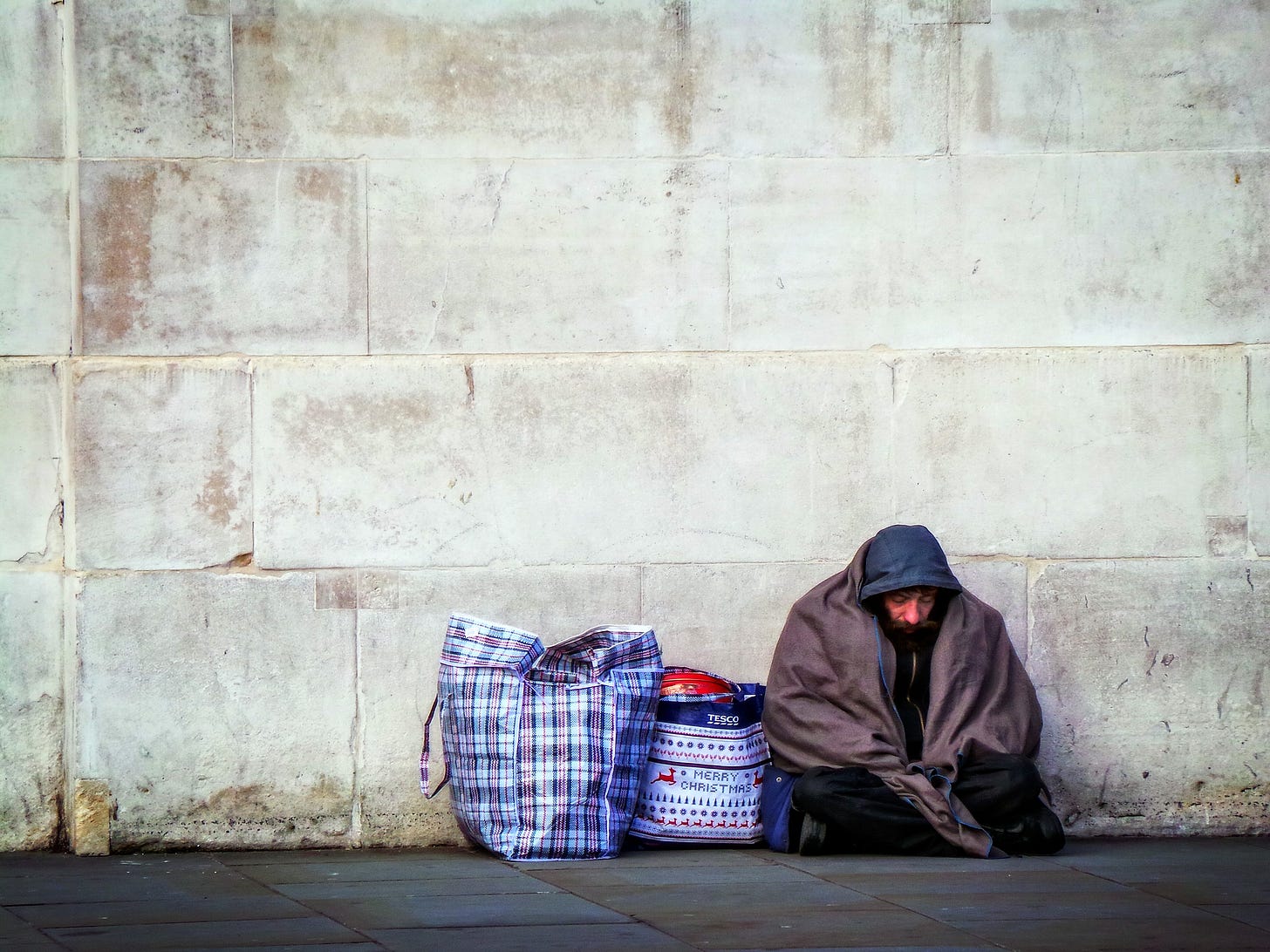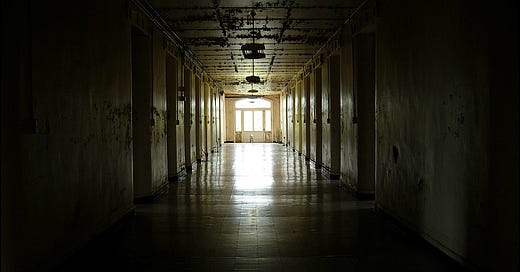"It's All About Money": Mental Health System Leaving Unprofitable Patients In Need of Care Behind
“The chronically mentality ill are basically left to rot on the street."
People with severe mental illness but no money are frequently the victims of a mental health system that treats them as a burden rather than patients in need of care.
Welcome to The Flashpoint.

“The system is broken and anyone without funds gets fucked,” said Vicky, a psychologist in California. “And generally will end up homeless at some point or locked up. Or dead.”
A September 19 New York Times article on nursing homes using claims of psychosis to eject unwanted and unprofitable patients generated intense reaction over the callousness it revealed. But mental health professionals have been warning more broadly about this practice for years and noting that dumping patients happens in their profession with regularity.
The Flashpoint talked to experts from around the country to get their perspective on how the mental healthcare system mistreats people from marginalized communities. In order to preserve anonymity, they are referred to by pseudonymous first names only.
“The mental health system treats ‘unprofitable people’ awful in many ways,” said Mike, a former mental health advocate in Pittsburgh. “Hospitals can straight up kick people to the street if they have nowhere to go.”
A stark picture emerged that shows mental health patients in need of care turned away, pushed on other facilities or hospitals, and cast aside by institutions unwilling or unable to provide them with the care they need.
More trouble than they’re worth
All of the experts The Flashpoint talked to confirmed, to one degree or another, that patients are dumped from facilities frequently. Reasons vary, but one theme is constant—patients with challenging conditions and treatment plans are all too often seen as more trouble than they’re worth.
“Specific hospitals also are known to deny inpatient services and will tell us that there is nothing they can do besides change the medication,” said Maria, a social worker in Pittsburgh.
Patient dumping has been an issue in the U.S. healthcare system for decades and lawmakers have tried to address it with varying degrees of success at the state and federal levels.
In 1986 the Emergency Medical Treatment and Labor Act effectively outlawed the practice on the federal level by barring hospitals from refusing treatment or ending treatment and care before the patient can be safely released. If someone is not deemed stable, they can’t legally be kicked out to the street where they can do harm to themselves or others.
Nonetheless, facilities find ways—relying on ambiguities in the law and language around treatment.
Amy, a social worker in Massachusetts, said that facilities can use the “concept of patients being ‘too acute’ for services or needing a ‘higher level of care’” as an excuse to keep out those needing more attention. That leaves patients with few options and can often result in hospitalization—avoiding which is frequently the reason for the treatment request in the first place.
“Basically when a patient seeks treatment from a facility that is not a hospital, if the referral says anything about suicide, self harm, aggression etc., the referral will be denied due to the patient being too dangerous for care,” said Amy. “When in reality, these patients don't need hospitalization or are trying to get help to avoid hospitalization, so instead they end up getting no referrals that work out, spiral again, and go back to the hospital or worse harm themselves or others.”

A system engineered to harm the poor
A lack of good health insurance can limit options for mental health patients. With limited numbers of beds, most facilities will prioritize assisting those whose providers can pay top dollar—a calculation based in the reality of running a private, for-profit healthcare system.
“At the private hospital I interned at, I saw psychiatrists release suicidal patients, or send off patients who needed a high level of care to crisis houses because they didn't have private insurance,” said Vicky, the psychologist.
Vicky added that the system is set up in such a way that it leaves patients with marginal or no resources with few options.
“The chronically mentality ill are basically left to rot on the street unless they commit crimes which sometimes they do for the reason of shelter,” she said. “Or unless they are with it enough to engage in a system that is so fucking difficult to navigate.”
“As with any system, it's engineered to harm the poor and minority population,” said Vicky. “The mental health system is no different.”
Some of the people most in need of assistance are already under pressure from a labyrinthine social services regime that is underfunded and unable to handle the level of need, said Los Angeles-based social worker Seth.
“It's all about money,” Seth told The Flashpoint. “We could solve homelessness easily with pennies in the national budget. All it would take is more affordable housing, easier access to food/services, and giving people more than enough money to survive. There's no reason why we're not doing this other than there's no money to be made in it and a good portion of Americans believe poor people should suffer.”
Families in impossible positions
Much of the time, those in compromised situations because of their mental health have been under-cared for since a young age, explained Pascal, who works with emotionally disturbed children at a high school. Pascal said turnover for youth with mental health challenges in schools and foster homes is high because it’s “fairly common for students in group homes to jump from group to group, or jump from school to school when the previous doesn't feel like dealing with them anymore.”
“My classroom in particular has received students whose previous placement had done almost no paperwork with them for years,” said Pascal. “Sophomores in high school whose paperwork was last updated when they were in 7th grade. Students in group homes have a rough time forming connection with staff and peers because they know that they're gonna be moved in a few months.”
Fighting for care can force families to make wrenching decisions for their children’s needs. Maria, the Pittsburgh social worker, said that parents and guardians are regularly stuck between keeping kids and giving them up to ensure the state will provide for their care—an impossible choice.
“There are multiple families around the nation who have had to give their children up to the state to ensure that they can receive the services they need so badly while private insurance denies it,” she said.

Burnout
The mental healthcare system regularly leaves those on the margins in a situation where they can end up isolated and without access to care for their problems. And the people in charge of their care are themselves overworked and emotionally and psychologically exhausted.
“It burnt me the fuck out,” said Seth. “Average turnover for social workers in NGO is about 6 months. I lasted two years. I don't know many people who still work there and have faith in the system working, but I do know a couple and they're fighting the good fight with two hands tied behind their back.”
Baltimore advocate Mike agreed.
“I think I started working in this field the same way everyone does, wanting to help people,” said Mike. “The longer you work in the field the more you realize that's not all that possible. Sure you may be able to help people in very small ways here and there but the system doesn't allow itself to be reformed. You just get burnt out.”
For her part, California psychologist Vicky offered a frank assessment of the situation she and her colleagues find themselves in as they try to negotiate a path forward that still helps those left behind.
“I love what I do, I really enjoy working with the acutely mentally ill,” said Vicky. “I don't think everyone can do it, and I don't think everyone enjoys it.”
“But at the same time,” she said, “I am always aware that I am part of a broken system.”



